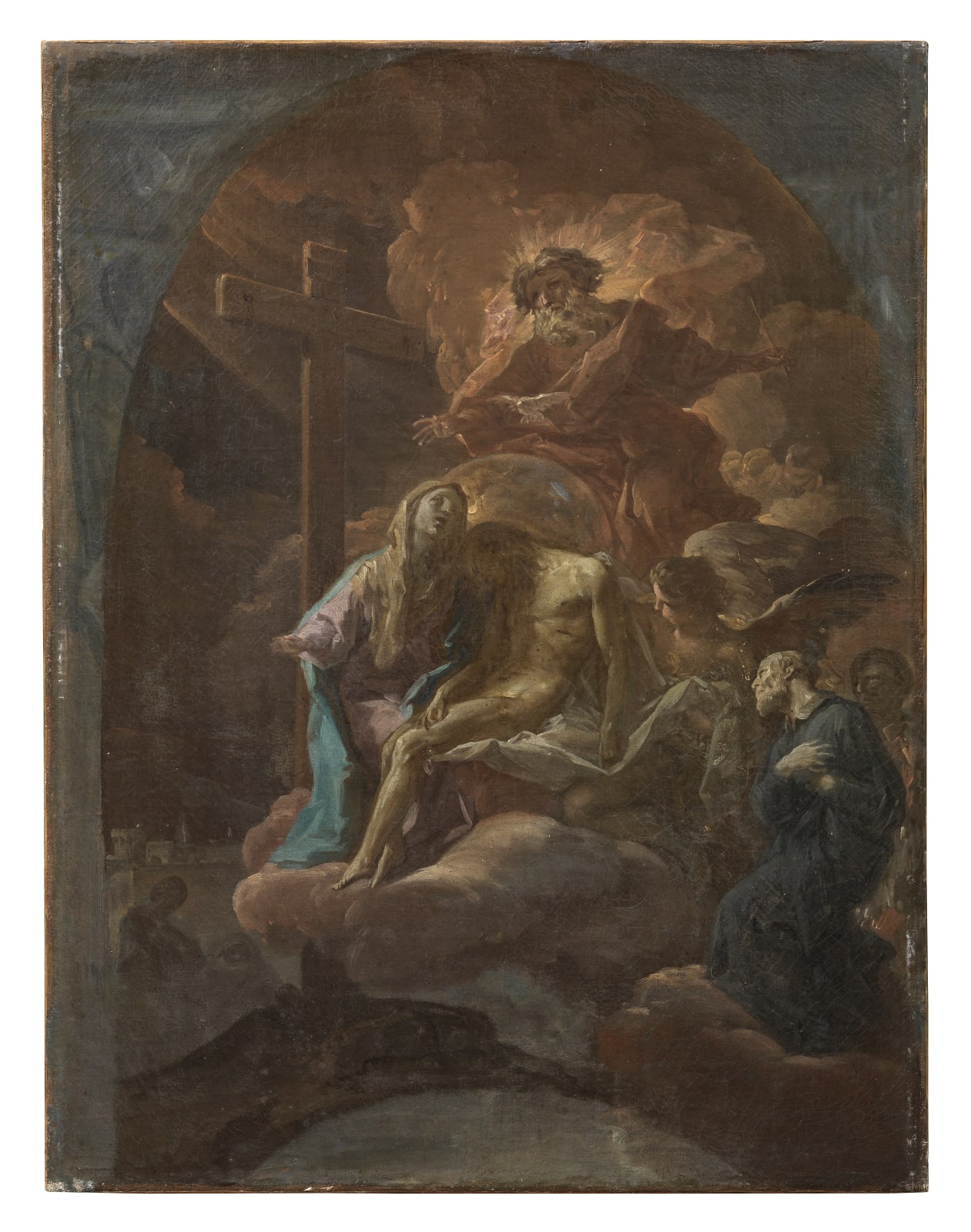
Corrado Giaquinto (Molfetta 1703-Naples 1766)
After a poorly documented training in Naples in the studio of Francesco Solimena, Corrado Giaquinto arrived in Rome in 1727. His first public commission was the decoration of the little Roman church of San Nicola dei Lorenensi in Via dell’Anima, which he took great care in adorning with scenes from the life of the Saint in 1731.
Around 1735, the artist left for Turin, where he worked, alongside his friend and colleague from the Reign of Naples, Filippo Juvarra, on a series of decorative projects for the House of Savoy, amongst which the elegant Villa della Regina and the Churches of Saint Philip and Saint Theresa, for which he painted numerous altarpieces.
Upon his return to Rome in the mid 1740s, the artist, whose reputation was already well-established, worked on a variety of projects: he decorated the Chapel of San Giovanni Calibita on the Isola Tiberina and worked on the large decoration of the Basilica of the Holy Cross in Jerusalem, whose architecture had been recently redesigned by Ferdinando Fuga.
It is in the specific context of this large project that our bozzetto was probably conceived, possibly as a modello for an altarpiece that was eventually never executed by the artist. The presence of the Holy Cross, which appears on the left side of the composition, next to the Sacred City of Jerusalem in the background, encourages us to believe our sketch to be related to this large project, on which the artist worked between 1743 and 1744, and which also entailed the grand decoration of The Virgin presenting Saint Helen and Constantine to the Trinity in the vault of the nave and The Twelve Apostles worshipping the Cross in the presbytery of the Basilica
Provenance
possibly Naples, estate of Corrado Giaquinto (after 1771); Rome, cardinal Camillo di Pietro (1806-1884); thence by descent to Marchesi Falletti di VillafallettoLiterature
M. d’Orsi, Corrado Giaquinto, Roma 1958, pp. 62-63, 81-82.